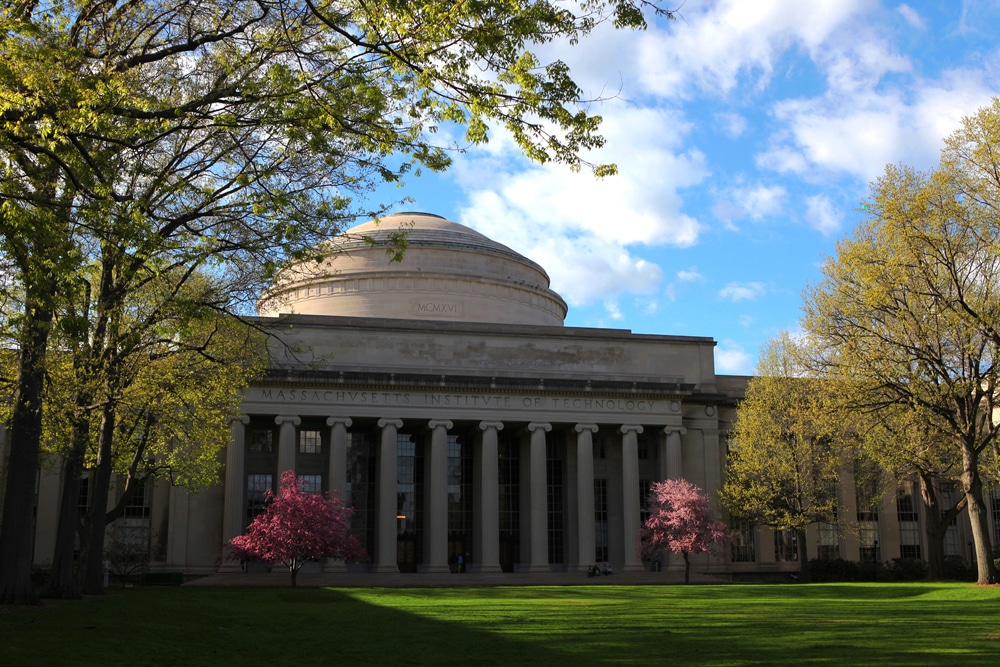A Deeper Look at MIT’s Ranking: The Factors, Achievements, and Influence on Global Education
The prestigious Massachusetts Institute of Technology (MIT) has long been a beacon of excellence in the world of academia, particularly in the fields of science, technology, engineering, and mathematics (STEM). Known for its rigorous curriculum and outstanding faculty, MIT’s ranking has always been consistently placed among the top institutions in global university rankings. The university’s impressive standing is attributed to various factors, including academic reputation, research output, citations per faculty, international outlook, and employer reputation.
MIT’s ranking is not only a reflection of its high-quality education and research environment but also an indicator of its far-reaching influence on global education and innovation. As an academic powerhouse, MIT attracts some of the brightest students and faculty members from around the world, fostering a diverse and collaborative atmosphere that contributes to the development of groundbreaking discoveries and technological advancements.
MIT’s ranking is not just a testament to its past achievements, but a driving force in shaping the future of education and research worldwide. In this blog post, we will explore the factors behind MIT’s impressive ranking, the achievements of the university and its alumni, and its continued impact on global education.
Overview of MIT
The Massachusetts Institute of Technology, commonly known as MIT, is a world-renowned private research university located in Cambridge, Massachusetts, USA. Founded in 1861 in response to the increasing industrialization of the United States, MIT has grown into a globally recognized institution dedicated to the pursuit of knowledge and innovation in various fields, most notably science, technology, engineering, and mathematics (STEM). The institute also offers exceptional programs in architecture, management, economics, and the humanities, among others.
MIT’s campus spans 168 acres and features cutting-edge research facilities, state-of-the-art classrooms, and modern living spaces, all designed to foster a collaborative and innovative learning environment. The university’s culture is marked by a strong emphasis on research, entrepreneurship, and interdisciplinary collaboration, which has led to groundbreaking discoveries and technological advancements over the years. Among its numerous achievements, MIT has produced 93 Nobel laureates, numerous Turing Award winners, and countless successful entrepreneurs.
Admission to MIT is highly competitive, attracting some of the brightest and most talented students from around the world. Once admitted, students are encouraged to engage in hands-on learning experiences, conduct research alongside faculty members, and participate in real-world projects that aim to address global challenges. In addition to its rigorous academic programs, MIT also offers a wealth of extracurricular activities and student organizations, fostering a vibrant campus life that encourages personal growth, leadership, and community involvement.
MIT’s commitment to excellence in research and education, coupled with its culture of innovation and collaboration, has earned it a top spot in global university rankings. Its influential alumni network spans various industries and sectors, making significant contributions to the global economy and shaping the course of human knowledge and progress. As a leader in higher education, MIT continues to evolve, tackling pressing global issues, and paving the way for future generations of innovators and change-makers.
What is the Ranking of MIT?
What is the ranking of MIT? The ranking of the Massachusetts Institute of Technology (MIT) is consistently among the top institutions in various global university rankings. While the exact MIT’s ranking may vary slightly depending on the ranking system, methodology, and year, MIT’s position as a leader in higher education, particularly in the fields of science, technology, engineering, and mathematics (STEM), remains undisputed.
U.S. News & World Report
The Massachusetts Institute of Technology (MIT) held a high position in the U.S. News & World Report’s university rankings. MIT was ranked as the 2nd best National University in the United States in the 2022-2023 edition of the report. It’s essential to recognize that rankings are subject to change, and the current ranking may differ.
The U.S. News & World Report’s rankings evaluate universities based on various factors, including academic reputation, faculty resources, student selectivity, financial resources, graduation and retention rates, and alumni giving. MIT’s consistently strong performance in these areas contributes to its high ranking in the report, reflecting the institute’s commitment to providing exceptional education and fostering innovation in numerous fields, particularly science, technology, engineering, and mathematics (STEM).
In addition to its overall ranking, MIT has historically excelled in subject-specific rankings, securing top positions in categories such as engineering, computer science, and business, among others. These high rankings in various fields underscore the depth and breadth of expertise present at MIT and its dedication to nurturing leaders and innovators across multiple disciplines.
Times Higher Education World University Rankings
The Massachusetts Institute of Technology (MIT) consistently held a prominent position in the Times Higher Education (THE) World University Rankings. In the 2023 edition of THE’s rankings, MIT was ranked 5th globally and 3rd in US College Rankings for 2022.
The Times Higher Education World University Rankings evaluate institutions based on a comprehensive set of performance indicators across five categories: teaching, research, citations, international outlook, and industry income. MIT’s strong performance across these areas highlights its commitment to academic excellence, cutting-edge research, global impact, and effective collaboration with industry partners.
In addition to its overall ranking, MIT frequently ranks highly in subject-specific categories within the THE World University Rankings. The institution’s expertise in science, technology, engineering, and mathematics (STEM) fields, as well as areas like economics, management, and the social sciences, is often recognized and celebrated.
QS World University Rankings
The Massachusetts Institute of Technology (MIT) consistently secured a top position in the QS World University Rankings. In the 2023 edition of the QS rankings, MIT was ranked as the number one university globally. It’s important to remember that rankings are subject to change, and the current ranking may differ.
The QS World University Rankings evaluates institutions based on six performance indicators: academic reputation, employer reputation, faculty-student ratio, citations per faculty, international faculty ratio, and international student ratio. MIT’s exceptional performance across these metrics reflects its unwavering commitment to academic excellence, cutting-edge research, and strong connections with industry partners, which together contribute to its high global ranking.
MIT is renowned for its expertise in science, technology, engineering, and mathematics (STEM) fields and consistently ranks highly in QS subject-specific rankings. This recognition highlights the institute’s depth and breadth of expertise and its dedication to nurturing leaders and innovators across a diverse range of disciplines.
While the QS World University Rankings, Times Higher Education, and U.S. News & World Report provide valuable insight into an institution’s standing and reputation, it is important to view them as one aspect of understanding a university’s overall impact or success. MIT’s commitment to advancing knowledge, fostering innovation, and educating future generations of thought leaders extends beyond its ranking, as evidenced by its numerous accomplishments, influential research, and global impact.
How is MIT Ranked?
How is MIT ranked? MIT’s impressive ranking can be attributed to several factors, including academic reputation, research output, citations per faculty, international outlook, and employer reputation. The university has cultivated an exceptional academic environment that fosters rigorous learning and research opportunities, enabling it to produce groundbreaking discoveries and innovations across multiple disciplines. This commitment to academic excellence has led to a strong global reputation and a consistent presence in the top spots of numerous prestigious rankings.
In addition to MIT’s ranking, MIT often receives high marks in specific subject areas, such as engineering, computer science, physics, and economics. This reflects the depth and breadth of expertise among MIT’s faculty and researchers, who are often regarded as leaders in their respective fields. Furthermore, the institute is renowned for its entrepreneurial spirit and alumni network, which boasts a long list of successful entrepreneurs, CEOs, and leaders in various industries.
It is important to note, however, that university rankings are only one measure of an institution’s success or impact. While MIT’s high ranking is certainly a testament to its achievements and reputation, the institute’s true value lies in its commitment to advancing knowledge, fostering innovation, and educating the next generation of thinkers and leaders. As such, MIT’s ranking serves as both a reflection of its past accomplishments and an inspiration for its continued pursuit of excellence in research, education, and global impact.
Why Do College Rankings Matter?
Why do college rankings matter? College rankings play a significant role for institutions like the Massachusetts Institute of Technology (MIT) for several reasons. While these rankings should not be the sole consideration in evaluating a university’s overall success or impact, they do hold considerable importance in the higher education landscape.
Global Recognition: A high ranking, such as MIT’s consistently strong position in various ranking systems like QS World University Rankings, Times Higher Education, and U.S. News & World Report, boosts the institute’s global recognition and reputation. This visibility draws the attention of prospective students, faculty, and partners from around the world, reinforcing MIT’s status as a leader in research, innovation, and education.
Attracting Talent: High rankings serve as a signal of quality and excellence, helping MIT attract top-tier students and faculty members. As competition for the brightest minds intensifies, a high ranking can serve as a differentiating factor in the decision-making process for students and researchers, who are more likely to consider prestigious institutions.
Funding Opportunities: A strong ranking enhances MIT’s ability to secure research grants, private funding, and philanthropic donations. These financial resources enable the institution to maintain state-of-the-art facilities, support groundbreaking research projects, and invest in cutting-edge technologies and programs.
Industry Collaboration: High-ranking universities like MIT are more likely to forge partnerships with leading companies and organizations in various industries. These collaborations create opportunities for joint research projects, technology transfer, and real-world applications of academic findings, contributing to the overall impact of the institute.
Alumni Network: The prestige associated with a high-ranking institution positively impacts the perceived value of degrees conferred by the university. For MIT, this translates into a robust and influential alumni network that is more likely to secure leadership positions and create successful ventures, further enhancing the institute’s reputation.
Benchmarking and Continuous Improvement: College rankings provide an opportunity for institutions like MIT to benchmark their performance against peer institutions and identify areas for improvement. This process encourages a culture of continuous improvement and drives innovation in research, teaching, and operational efficiency.
While college rankings undoubtedly matter for MIT, it is crucial to remember that they do not entirely capture the essence of an institution’s impact, success, or contribution to society. The true value of MIT lies in its commitment to advancing knowledge, fostering innovation, and educating future generations of leaders, thinkers, and problem-solvers who will shape the world for the better.
What is the Benefit of MIT’s Ranking in College Application?
What is the benefit of MIT’s ranking in college application? The prestigious ranking of the Massachusetts Institute of Technology (MIT) can impact college applications in several ways, providing benefits for both prospective students and the institution itself. Here are some of the notable benefits:
Enhanced Reputation and Visibility: MIT’s high ranking in various university ranking systems contributes to its strong global reputation and visibility. Prospective students are more likely to consider applying to institutions with higher rankings, as it signals a high quality of education, research opportunities, and overall academic experience.
Competitive Advantage: An application to MIT carries weight due to the institute’s reputation for academic excellence and innovation. Being accepted into and attending a top-ranked university like MIT can provide students with a competitive edge when entering the job market or pursuing graduate studies. Employers and graduate schools may view a degree from a highly-ranked institution as an indicator of a candidate’s potential for success.
Networking Opportunities: MIT’s ranking attracts top-tier students and faculty members from around the world, creating a diverse and intellectually stimulating environment. As a result, students have the opportunity to forge connections and network with talented peers and accomplished professionals, which can prove invaluable throughout their careers.
Access to Resources and Facilities: The prestige associated with MIT’s ranking helps secure funding, research grants, and industry partnerships, ensuring that students have access to state-of-the-art facilities, cutting-edge technologies, and ample research opportunities. These resources contribute to an enriching academic experience that prepares students to excel in their chosen fields.
International Exposure: MIT’s global reputation and ranking draw students from diverse backgrounds and nationalities. This international exposure provides a unique opportunity for students to learn from different perspectives, cultivate cross-cultural understanding, and establish a global network of connections.
Confidence in the Quality of Education: When applying to a highly ranked institution like MIT, prospective students can be confident in the quality of education they will receive. The ranking serves as a validation of the institute’s commitment to academic excellence, research, and innovation, assuring applicants of a valuable and enriching college experience.
Prestigious Scholarships and Financial Aid: MIT’s reputation and ranking enable it to offer competitive scholarships and financial aid packages to attract top students, regardless of their financial background. This ensures that MIT remains accessible to talented students from various socioeconomic backgrounds.
It is essential to remember, however, that while MIT’s ranking may offer several benefits during the college application process, prospective students should consider other factors, such as personal fit, academic interests, and extracurricular opportunities when making their college decision. The true value of an institution lies not only in its ranking but also in its commitment to fostering intellectual curiosity, personal growth, and a sense of community among its students.
Conclusion
Ultimately, MIT’s ranking is a testament to its dedication to academic excellence, groundbreaking research, and innovation. This ranking has far-reaching implications for the institution and global education at large. As we look to the future, MIT will undoubtedly continue to shape the course of education and research while addressing the world’s most pressing challenges.
Want to learn more about your chances of getting into MIT? You’ve come to the right place. At AdmissionSight, we have over 10 years of experience guiding students through the competitive admissions process.
AdmissionSight can help you put your best foot forward when applying to college this fall. Contact us today for more information on our services.










































